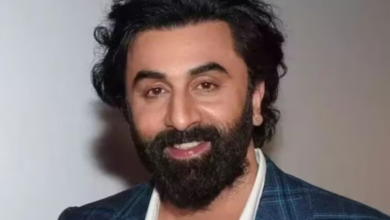Forces lead to alliances amongst INDIA members
Finally, despite internal tensions and insecurities that raise questions about the coalition’s capacity to defeat the BJP-led NDA in the Lok Sabha elections, the Indian National Developmental Inclusive Alliance (INDIA) is beginning to present a facade of consolidation.

The most important part of the alliances that the Congress finalized last week with the Samajwadi Party (SP) in Uttar Pradesh and the Aam Aadmi Party (AAP) in Delhi, Haryana, and Gujarat is the party’s tardy recognition that it is no longer in charge of a coalition from its lofty vantage point. The playing ground is unequal when it comes to the contest for influence between regional bodies and pan-Indian parties like the Congress. In this scenario, the leverage is restricted to seat-sharing rather than leadership or developing a political narrative.
Potential allies of the Congress, like the Trinamool Congress (TMC), are adamantly opposed to giving up the advantage they would want, while other parties, like the AAP and SP, have declined to make concessions in order to get their share of the deal from the party. Both parties must be wondering if there is enough room to craft an ideological countervail against the BJP, which constantly reminds voters of its “commitment” to the RSS’s ideology despite the obvious cynicism it displays in an attempt to hold onto power. This is because the recently settled relationships appear so transactional.
Naturally, people were somewhat encouraged by AAP leader and Delhi Chief Minister Arvind Kejriwal’s pledge that INDIA will act as their “safety net,” shielding his signature initiatives from the Center’s purported predation.
While protecting their territory, regional parties have their own obligations. The majority of them, particularly the SP, suffered from repeated defeats during the BJP’s ascent to national prominence.
The SP would be left beaten and demoralized before the 2027 UP elections if it does not put up a good performance on the 63 seats it will fight (17 have been allotted to the Congress). This implies that it has to win more than just the legacy seats claimed by its head Akhilesh Yadav’s family. Every election in Uttar Pradesh since 2014 has been lost by the SP, including the 2017 Assembly elections, which it contested with the Congress. At that time, there were many seats where both parties breached their half-hearted agreement.
Rahul Gandhi and Akhilesh, the chief minister at the time, spearheaded the campaign using the slogan “UP ke do ladke” (UP’s two sons). However, in practice, the SP struggled to shift its base support from the Yadav caste to the Congress. Because everyone is fighting for survival, this time around, despite the first bumps, the seat-sharing was agreed upon more easily. Insiders say that despite the third party, the Bahujan Samaj Party, having a track record of fielding many minority candidates to divide votes, there is a significant anticipation that the coalition would win the Muslim vote. The minority vote would have been divided if the SP and the Congress had not been affiliated.
There were several factors to take into account while forming a collaboration with AAP. The BJP won the Lok Sabha elections in Delhi with overwhelming margins in both 2014 and 2019, which served to highlight the AAP’s limited presence in comparison to Kejriwal’s aspirational goals. The Delhi Government’s powers were curtailed by a law passed by the Centre, which also significantly reduced the Chief Minister’s authority over his own officials, making the AAP more vulnerable. Subsequently, two of Kejriwal’s ministers and top aides were arrested as a result of the excise case investigation.
But Kejriwal never revealed that he was operating at a disadvantage when he bargained with the Congress. In reality, when he threatened to leave the conference in June of last year if the Congress did not openly express its opposition to the Delhi Services Bill, he dealt the first blow to an emerging INDIA. Later, by establishing a parliamentary strategy committee to address concerns resulting from coalitions, Congress president Mallikarjun Kharge broke the standoff.
In the hopes that the agreement would combine the traditional votes of both parties from the minorities, Dalits, and a portion of the migrant population, the AAP secured four of the seven seats it sought in Delhi, leaving three for the Congress. For tactical reasons, the AAP made sure that there was no coalition in Punjab; if there had been, the anti-AAP support may have switched significantly to the Shiromani Akali Dal or the BJP.
With the exception of a reversal in the 2019 Lok Sabha election when the BJP gained an extraordinarily high number of seats, West Bengal amply demonstrated the Congress’ vulnerability to a formidable provincial leader, the TMC’s Mamata Banerjee, who has enjoyed an uninterrupted government since 2011. Nevertheless, Mamata survived and rebounded in the subsequent Assembly elections. The ongoing attacks on Mamata by state Congress president Adhir Ranjan Chowdhury worsened the rift between the Congress and TMC. With no way to stop Mamata, the Congress hasn’t even attempted to control Chowdhury.
There is no need to consider who should govern India. Its narrow goal seems to be containing the BJP whenever possible. The Congress is lucky that its alliances in Bihar and Tamil Nadu remain intact, even with the JD(U) leaving. However, can the party’s upper echelons curb the daily flight of members from their ranks to the BJP and provide the image that the party is at least somewhat strong? The goal of the BJP is to undermine the Congress. Later on, we can deal with the few regional players who have so far refused to submit to it.







